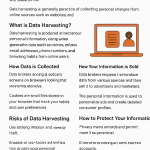5G & 6G Networks: The Future of Connectivity and Why It Matters
Discover the future of wireless connectivity with 5G and 6G networks. Learn their benefits, key differences, and why they matter for global innovation.
🌐 Introduction
The world is in the middle of a connectivity revolution. Just a few years ago, 4G LTE transformed the way we use smartphones, enabling mobile apps, video streaming, and mobile payments. Today, 5G networks are unlocking even greater possibilities—from smart cities to autonomous vehicles. But the story doesn’t stop there. Researchers are already working on 6G networks, which promise to redefine the internet as we know it.
This blog will explore:
- What 5G and 6G are.
- The importance of 5G and 6G in global development.
- A detailed comparison between 5G vs. 6G.
- Why both technologies are crucial for the future of communication, business, and everyday life.
👉 For background on wireless evolution, check Qualcomm’s overview of mobile generations.
📶 What is 5G?
5G, short for fifth-generation wireless technology, is the successor to 4G LTE. It is designed to deliver:
- Ultra-fast speeds (up to 10 Gbps, 100x faster than 4G).
- Low latency (as little as 1 millisecond).
- Massive device connectivity (supporting billions of IoT devices).
- Better reliability and improved coverage.
🔑 Key Benefits of 5G
- Enhanced Mobile Experience: Smooth 4K/8K video streaming, AR/VR gaming, and instant downloads.
- Smart Cities: Enabling real-time monitoring of traffic, energy grids, and infrastructure.
- Healthcare: Remote surgeries and telemedicine powered by high-speed, low-latency connections.
- Autonomous Vehicles: Cars that communicate instantly with each other and traffic systems.
👉 Learn more about 5G use cases here.
⚡ What is 6G?
6G, the sixth-generation wireless technology, is still in development, with expected rollout around 2030. While 5G is revolutionizing the present, 6G aims to merge the digital, physical, and human worlds.
🔑 Expected Features of 6G
- Terahertz (THz) frequencies for speeds up to 1 Tbps (1,000x faster than 5G).
- Ultra-low latency—virtually instantaneous communication.
- AI-driven networks that self-optimize and repair.
- Holographic communication—real-time 3D holograms for meetings and entertainment.
- Massive IoT expansion—billions of interconnected smart devices.
👉 Early insights available from 6G Flagship Research.
📊 5G vs. 6G: Key Comparisons
| Feature | 5G | 6G (Projected) |
|---|---|---|
| Speed | Up to 10 Gbps | Up to 1 Tbps (1,000x faster) |
| Latency | 1 ms | < 0.1 ms (nearly instant) |
| Frequency Range | Sub-6 GHz, mmWave | Terahertz spectrum (100 GHz–10 THz) |
| Connectivity | 1 million devices per km² | 10+ million devices per km² |
| Applications | Smart cities, AR/VR, IoT, cars | Holograms, AI-powered IoT, brain-computer interfaces |
| Deployment Timeline | Ongoing (2020–2025) | Around 2030 onwards |
🌍 Importance of 5G and 6G
Why 5G Matters Today
- Economic Growth: According to PwC, 5G could add $1.3 trillion to the global economy by 2035.
- Innovation Enabler: Supports autonomous transport, healthcare advancements, and Industry 4.0.
- Bridging the Digital Divide: Expanding access to rural and underserved areas.
Why 6G Will Be Game-Changing
- Immersive Experiences: AR glasses, holographic concerts, and digital twins of entire cities.
- Healthcare Revolution: AI-driven diagnostics and remote patient monitoring in real time.
- Global Connectivity: Enabling smart satellites and space-based internet.
- Sustainable Development: Smarter energy use and climate monitoring with billions of IoT sensors.
🧠 The Future: 5G and 6G Together
While 5G is the present, 6G is the future. The two technologies are not rivals but stepping stones. Businesses, governments, and consumers need to embrace 5G today to prepare for the hyper-connected reality of 6G tomorrow.
👉 Learn more from GSMA’s vision of 5G & beyond.
✅ Conclusion
The journey from 5G to 6G represents more than faster internet—it’s about transforming the way humans, machines, and the environment interact.
- 5G is making smart cities, IoT, and autonomous driving a reality.
- 6G will push the boundaries further with terahertz speeds, holographic communication, and AI-powered networks.
In short, 5G and 6G are not just technologies—they’re the foundation of the digital future.










